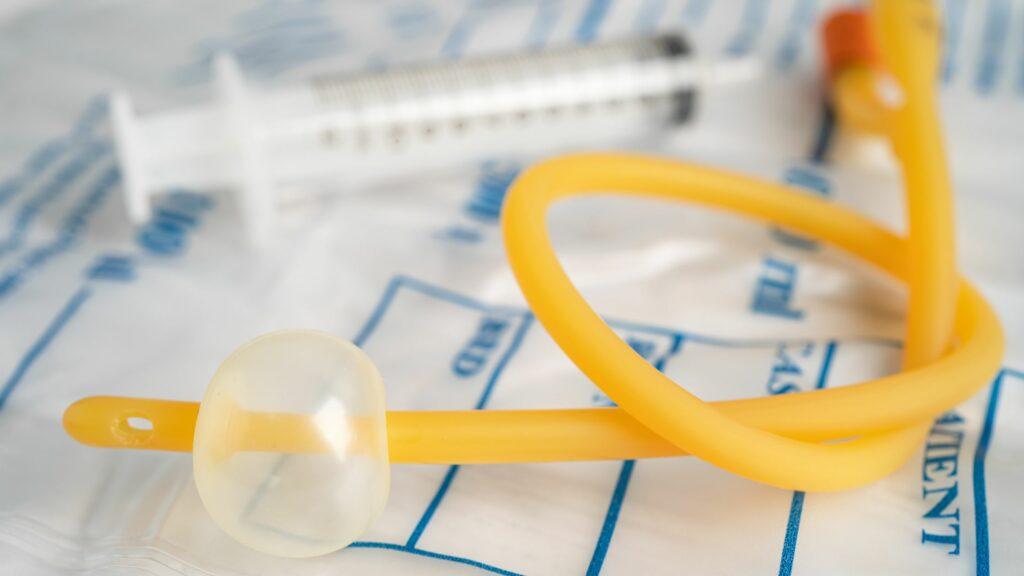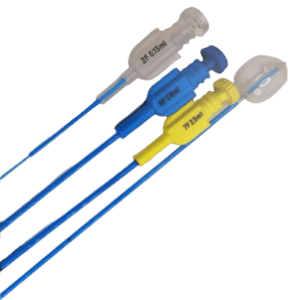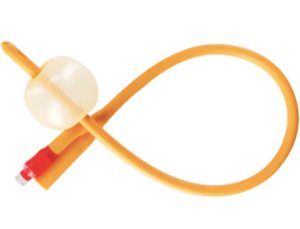In the vast realm of medical advancements, few devices have revolutionized patient care as profoundly as balloon catheters. These remarkable tools have become a cornerstone of modern medical procedures, offering a multitude of applications and delivering exceptional outcomes for patients worldwide.
In this blog, we will embark on a journey of knowledge, exploring the intricacies of balloon catheters, their various types, and the pivotal role they play in medical treatments. We will delve into the importance of size and material selection, providing you with insights on how to choose the appropriate balloon catheter based on medical requirements.
Furthermore, we will blog you through the proper placement techniques and step-by-step insertion procedures of balloon catheters. We will uncover the key applications and advantages of utilizing these catheters and address crucial aspects such as managing complications and exploring the latest innovations in balloon catheter technology.
Understanding Balloon Catheters and Their Working
Balloon catheters are sophisticated medical devices designed to perform a range of procedures, aiding in both diagnosis and treatment. These catheters consist of a flexible tube with an inflatable balloon at its tip. The balloon can be inflated or deflated using a sterile liquid or gas, allowing healthcare professionals to perform a variety of tasks with precision.
Balloon catheters function based on the simple yet ingenious principle of balloon inflation. When the balloon is deflated the catheter can be inserted into the target area such as blood vessels or body cavities with ease. Once in place, the balloon is inflated, exerting controlled pressure and creating a secure seal or dilating the surrounding tissue, depending on the procedure’s requirements. This inflation process enables medical professionals to accomplish a wide array of tasks, including vessel dilation, plaque removal, fluid drainage, and more.
Different Types of Balloon Catheters
Balloon catheters are medical devices used in various procedures to open up or widen narrowed or blocked blood vessels or other tubular structures in the body. They typically consist of a flexible catheter tube with an inflatable balloon at the tip. When the balloon is inflated, it compresses the surrounding material, thereby expanding the vessel or structure.
Here are some different types of balloon catheters commonly used in medical procedures
- Angioplasty Balloon Catheters: These are used in angioplasty procedures to treat blocked or narrowed arteries. The balloon is inflated to compress the plaque or blockage against the artery walls, allowing for improved blood flow.
- Coronary Balloon Catheters: Specifically designed for coronary arteries, these balloon catheters are used in the treatment of coronary artery disease and heart attacks. They are used in procedures like percutaneous coronary intervention to open up narrowed or blocked coronary arteries.
- Peripheral Balloon Catheters: These catheters are used in peripheral arterial angioplasty to treat narrowed or blocked blood vessels in the legs, arms, or other peripheral areas of the body.
- Urological Balloon Catheters: Urological balloon catheters are used in procedures involving the urinary system. Examples include Foley catheters with inflatable balloons used for bladder drainage or dilatation catheters used for urethral strictures.
- Gastrointestinal Balloon Catheters: These catheters are used in the gastrointestinal tract for various procedures. Examples include esophageal dilation catheters for treating strictures or obstructions in the esophagus and balloon enteroscopy catheters for diagnostic or therapeutic interventions in the small intestine.
- Biliary Balloon Catheters: These catheters are used in procedures involving the biliary system, such as treating blockages in the bile ducts. Balloon dilation catheters can be used to expand narrowed or obstructed bile ducts.
- Obstetric and Gynecological Balloon Catheters: These catheters are used in obstetrics and gynecology for procedures like cervical ripening and induction of labor. Examples include Foley catheters with balloons used to mechanically dilate the cervix.
Choosing the Right Size and Material Balloon Catheter
Size and material selection are crucial aspects when it comes to balloon catheters. Each medical procedure requires careful consideration to ensure optimal patient outcomes. Let’s explore the factors to consider and the importance of choosing the appropriate size and material for a balloon catheter.
- Size Selection: Choosing the right size of the balloon catheter is essential to achieve the desired therapeutic effect. The size of the balloon should match the target vessel or cavity’s dimensions to ensure optimal contact and desired outcomes. Medical professionals carefully assess factors such as vessel diameter, lesion length, and anatomical considerations to determine the appropriate balloon size. Using an undersized or oversized balloon catheter may compromise the effectiveness of the procedure or pose risks to the patient.
- Material Selection: The choice of material for a balloon catheter is equally significant, as it impacts the device’s performance, compatibility, and safety. Common materials used for balloon catheters include silicone latex polyurethane and nylon. Each material possesses distinct properties and considerations. For instance, silicone is known for its biocompatibility and flexibility, making it suitable for delicate procedures. Polyurethane on the other hand offers excellent strength and kink resistance. The selection of the material depends on factors such as the intended application, patient sensitivities, and procedural requirements.
In summary, selecting the right size and material for a balloon catheter is vital to optimize treatment outcomes and ensure patient safety. Healthcare professionals work diligently to match the dimensions and characteristics of the balloon catheter with the target area, considering various factors to achieve the best results.
Understanding Balloon Catheter Placement and Insertion
Balloon catheter placement and insertion refer to the procedure of positioning a catheter with an inflatable balloon at its tip into a specific location in the body to achieve a therapeutic goal. The process involves several steps
- Patient Preparation: The patient is positioned appropriately based on the procedure requirements. The insertion place is cleaned and sterilized to reduce the risk of infection.
- Anesthesia: The patient’s comfort during the procedure can be ensured by administering either local or general anesthesia. The anesthesia depends on the specific circumstances and the patient’s needs.
- Access Point: A small incision or puncture is made at the entry site, typically in a blood vessel, urinary tract, or another anatomical structure. The access point is carefully selected based on the target location and the procedure being performed.
- Guidewire Insertion: A thin, flexible guidewire is inserted through the access point and guided toward the target location. The guidewire helps navigate the catheter through the body.
- Catheter Insertion: The balloon catheter is advanced over the guidewire and threaded through the access point toward the desired location. The catheter can be inserted manually or with the help of imaging techniques ultrasound to ensure proper placement.
- Balloon Inflation: Once the catheter is properly positioned, the balloon at its tip is inflated using a sterile fluid or gas. The inflation may be controlled manually by the healthcare professional or by using a specialized inflation device.
- Therapeutic Effect: The inflated balloon exerts pressure on the surrounding tissue or vessel, achieving the intended therapeutic effect. For example, in angioplasty, the balloon’s inflation compresses the plaque against the artery walls, widening the vessel and restoring blood flow.
- Monitoring: Throughout the procedure the healthcare team monitors the patient’s vital signs and uses imaging techniques to evaluate the progress and ensure patient safety.
- Balloon Deflation and Catheter Removal: Once the therapeutic effect is achieved, the balloon is deflated, and the catheter is carefully withdrawn from the body. Pressure may be applied to the insertion site to control bleeding if necessary.
- Post-procedure Care: After the procedure, the patient receives appropriate post-care instructions, including wound care, pain management, and follow-up appointments for monitoring and recovery.
Key Applications of Balloon Catheters
Balloon catheters have several key applications in various medical fields. Some of the main applications are
- Angioplasty: Balloon catheters are widely used in angioplasty procedures to treat narrowed or blocked blood vessels. The balloon is inflated to compress the plaque against the artery walls, widening the vessel and improving blood flow.
- Stent Placement: Balloon catheters are often utilized to deploy stents in blood vessels. The stent, a mesh-like tube, is mounted on the deflated balloon and positioned at the desired site. When the balloon is inflated, it expands the stent, securing it in place and improving vessel patency.
- Urological Interventions: Balloon catheters find applications in various urological procedures. For example, they are used in dilatation procedures to widen strictures in the urinary tract, such as urethral strictures. In urology, balloon catheters are also employed for bladder drainage, such as Foley catheters with an inflatable balloon at the tip.
- Gastrointestinal Interventions: Balloon catheters are used in gastrointestinal procedures for dilation or treatment of strictures or obstructions. They can be employed in esophageal dilation to widen narrowed areas or in balloon enteroscopy for diagnostic and therapeutic interventions in the small intestine.
- Biliary Interventions: Balloon catheters are utilized in procedures involving the biliary system. They can be used to dilate narrowed or obstructed bile ducts, helping to restore the flow of bile.
- Obstetrics and Gynecology: In obstetrics and gynecology, balloon catheters have applications such as cervical ripening and induction of labor. Foley catheters with balloons are used to mechanically dilate the cervix and promote labor induction.
Advantages of Using Balloon Catheters
Using balloon catheters in medical procedures offers several advantages.
- Minimally Invasive: Balloon catheter-based procedures are generally less invasive compared to traditional surgical interventions. They often require only a small incision or puncture for catheter insertion, reducing trauma to the patient’s body and resulting in shorter recovery times.
- Targeted Treatment: Balloon catheters allow for precise targeting of specific areas within the body. They can be navigated to the site of the problem, such as a narrowed blood vessel or an obstructed passage, enabling targeted treatment at the exact location of the issue.
- Widely Applicable: Balloon catheters have a wide range of applications in various medical fields including cardiology urology gastroenterology and more. Their versatility allows for the treatment of different conditions and diseases making them a valuable tool for many healthcare professionals.
- Balloon Dilation: The inflation of the balloon at the tip of the catheter allows for controlled dilation of narrowed or blocked vessels or passages. This helps restore blood flow, relieve obstructions, or widen strictures, improving overall organ function.
- Potential Avoidance of Surgery: In some cases, balloon catheter-based procedures can eliminate the need for open surgery. This can result in shorter hospital stays reduced complications and faster recovery times for patients.
- Lower Risk: Compared to more invasive surgical procedures, balloon catheter-based interventions generally carry lower risks and complications. The smaller incision or puncture site reduces the chances of infection, bleeding, and scarring.
- Outpatient Capability: Many balloon catheter procedures can be performed on an outpatient basis, allowing patients to return home on the same day. This minimizes the need for hospitalization and reduces healthcare costs.
- Customizable Treatment: Balloon catheters come in various sizes and configurations, allowing for customized treatment based on the patient’s specific condition. Healthcare professionals can choose the appropriate catheter size, balloon diameter, and length to suit individual patient needs.
Managing and Preventing Balloon Catheter Complications
Managing and preventing balloon catheter complications is crucial to ensure patient safety and optimal outcomes. Here are some key strategies.
- Thorough Training: Healthcare professionals involved in balloon catheter procedures should receive comprehensive training and have a thorough understanding of the technique, equipment, and potential complications associated with the procedure.
- Proper Patient Selection: Careful patient selection is important to minimize the risk of complications. Consideration should be given to factors such as the patient’s medical history coexisting conditions and anatomical factors that may increase the risk of complications.
- Procedural Planning and Skillful Technique: Adequate procedural planning, including proper sizing and selection of the balloon catheter, is essential. Skillful technique, including precise catheter placement and controlled balloon inflation, reduces the risk of complications.
- Imaging Guidance: Real-time imaging guidance, such as fluoroscopy or ultrasound, can help visualize the catheter placement and monitor the procedure, reducing the risk of incorrect positioning or damage to surrounding structures.
- Infection Prevention: Stringent infection control measures, including proper hand hygiene, sterile techniques during catheter insertion, and adherence to catheter maintenance protocols, help prevent catheter-related infections.
- Monitoring and Vigilance: Continuous monitoring of blood pressure and heart rate during and after the procedure can help detect complications early. Vigilance in recognizing signs of potential complications, such as bleeding or allergic reactions, is crucial for prompt intervention.
- Complication Management: Healthcare professionals should be prepared to manage potential complications that may arise during or after balloon catheter procedures. This includes having the necessary equipment, medications, and skills to address complications promptly and effectively.
- Patient Education and Follow-up: Providing patients with clear instructions on post-procedure care, including wound care and signs of complications, is essential. Scheduled follow-up appointments allow for monitoring of the patient’s progress.
Balloon Catheters From Leading Indian Manufacturers
LIFER Foley Catheter
 The LIFER Foley Catheter, a superior medical device crafted by Sterile World Technologies LLP (SWT) in India, stands out as a premier indwelling catheter meticulously designed to facilitate efficient urine drainage from the bladder. This top-quality catheter boasts a remarkable soft and flexible tube, fashioned from high-grade plastic or rubber, ensuring optimal patient comfort during both insertion and the entire catheterization process. Available in various sizes, your healthcare provider will expertly select the most suitable catheter to meet your specific needs.
The LIFER Foley Catheter, a superior medical device crafted by Sterile World Technologies LLP (SWT) in India, stands out as a premier indwelling catheter meticulously designed to facilitate efficient urine drainage from the bladder. This top-quality catheter boasts a remarkable soft and flexible tube, fashioned from high-grade plastic or rubber, ensuring optimal patient comfort during both insertion and the entire catheterization process. Available in various sizes, your healthcare provider will expertly select the most suitable catheter to meet your specific needs.
Nishi’s Urethral Catheter
The ClearEmbo Embolectomy Catheter serves as a sterile medical tool created by Newtech Medical Devices Pvt Ltd India. Its purpose is to eliminate newly formed arterial embolisms. This catheter, devoid of toxins and pyrogens, possesses the ability to be seen during fluoroscopy, thus enhancing its utility in delicate medical procedures. Functioning as a single-lumen catheter, it employs hand-tied balloons that have been pre-stretched to ensure flexibility. These balloons are securely affixed in three separate areas, allowing them to endure substantial force before detachment.
Their well-centered positioning and resilience against rupturing guarantee optimal performance while carrying out the embolism removal process. ClearEmbo Catheter is designed with the utmost precision, ensuring its durability and effectiveness. Its durable construction material can withstand significant force before the balloon disengages, providing peace of mind to healthcare professionals.
With color-coded French sizes, identifying the appropriate catheter becomes quick and convenient. Packed in a strong plastic shell casing, ClearEmbo Catheter ensures the device’s integrity during transportation and storage. Additionally, it comes with a stainless stylet, facilitating easier insertion and enhancing the overall user experience.
Silicone Foley Balloon Catheter
DR. AM’S HEALTHCARE, a leading manufacturer and global supplier of medical devices, presents the Silicone Foley Balloon Catheter. This sterile catheter is specifically designed for efficient urine discharge through the bladder. Made entirely of medical-grade silicone, the device exhibits excellent biological compatibility, ensuring patient comfort and safety. Its smooth, tapered, rounded tip allows for easy insertion into the urethra, minimizing patient discomfort during the procedure. The accurately shaped drainage eyes enable efficient drainage, preventing blockages and ensuring smooth urine flow.
The evenly expanding symmetrical balloon ensures consistent expansion in every direction, effectively securing the bladder in its position. This feature enhances patient comfort and prevents accidental dislodgment of the catheter. To facilitate easy identification of different sizes, the catheter sleeves are color-coded, enabling healthcare professionals to quickly select the appropriate size for their patients. With its exceptional quality and design, the Silicone Foley Balloon Catheter by DR. AM’S HEALTHCARE provides reliable and effective urinary management solutions.
dispofoleys
Disposafe Health and Life Care Ltd., a leading manufacturer and global supplier of medical devices, presents dispofoleys, a high-quality balloon catheter designed for safe and non-traumatic insertion. A distinctive method is employed to seal the far end of the catheter, which is also equipped with two smooth-edged openings, in order to minimize the potential for harm and the likelihood of contamination. The ultra-thin and elastic balloon extends evenly for bladder retroflection, ensuring effective and efficient drainage.
The catheter features a rigid plastic valve that allows for a secure connection with regularly utilized syringe needles, enabling easy deflation and inflation. This valve has been proven to be more effective than soft rubber valves, providing enhanced reliability. The dispofoleys catheter is made of 100% silicone elastomer, ensuring excellent biocompatibility and reducing the risk of adverse reactions.
Additionally, it offers smaller balloon capabilities for sizes 8FR to 26FR, catering to a wide range of patient needs. Each catheter is individually wrapped in a sterile peelable blister pack, ensuring hygiene and ease of use in healthcare settings.
AD-25 Silicon Foley Balloon Catheter
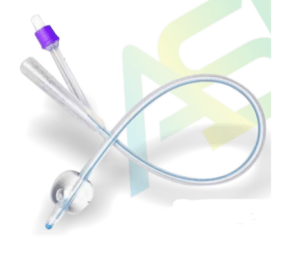
Introducing the AD-25 Silicon Foley Balloon Catheter from ASKP SOLUTIONS, a well-known manufacturer and worldwide distributor of catheters.This catheter is designed for short-term or long-term urine drainage, providing reliable and efficient performance. The AD-25 catheter features a high-strength polymer layer in the center, increasing the inner diameter and ensuring high flow rates. This design minimizes encrustation and subsequent catheter blockage and failure, enhancing the device’s longevity and patient comfort.
The catheter is equipped with a smooth eye, allowing for trouble-free insertion, and an ultra-thin highly elastic balloon, ensuring optimal inflation and deflation. The hard non-return valve enables secure and reliable inflation and deflation, reducing the risk of leakage. With its advanced design and high-quality materials, the AD-25 Silicon Foley Balloon Catheter offers healthcare professionals a reliable and efficient solution for urine drainage.
Apolo’s Foley Balloon Catheter
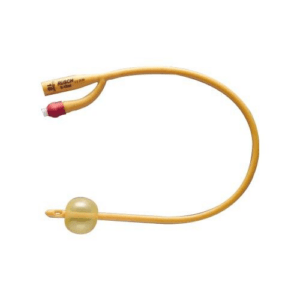
Apolo Surgical presents Apolo’s Foley Balloon Catheter, designed for both short and long-term catheterization. This high-quality catheter is carefully crafted to meet the needs of healthcare professionals and patients alike. The distal end of the catheter is coned with extra smooth two large lateral eyes, ensuring maximum drainage efficiency. This design minimizes the risk of blockages and ensures smooth and uninterrupted urine flow.
Apolo’s Foley Balloon Catheter is suitable for both short-term and long-term use, providing flexibility and versatility in various clinical settings. With its reliable performance and user-friendly design, Apolo’s Foley Balloon Catheter is a trusted choice for catheterization needs.
Medzell: Empowering Healthcare with Futuristic B2B Solutions
As the healthcare industry continues to evolve, platforms like Medzell, a futuristic B2B platform for promoting Indian medical devices in emerging markets, play a crucial role in connecting medical professionals with cutting-edge technologies. Medzell provides a bridge between medical device manufacturers and healthcare providers, facilitating the adoption of innovative solutions and driving progress in medical procedures.
Conclusion
Balloon catheters have revolutionized the field of medical interventions, providing minimally invasive solutions to a wide range of conditions. Understanding their function, types, placement techniques, and applications is essential for healthcare professionals and patients alike. By selecting the appropriate size and material, following best practices for insertion, and prioritizing patient safety, balloon catheter procedures can be performed with confidence and precision.
The continuous advancements in balloon catheter technology, such as drug-coated catheters, bioresorbable materials, and robotic-assisted systems, further expand the possibilities for medical interventions. These innovations offer personalized treatment options, increased precision, and improved procedural success rates.
In conclusion, balloon catheters have revolutionized the way medical interventions are performed, offering numerous benefits and expanding treatment possibilities. With ongoing advancements and platforms like Medzell driving innovation, the future of balloon catheter technology is bright, promising improved patient care and enhanced healthcare practices.
